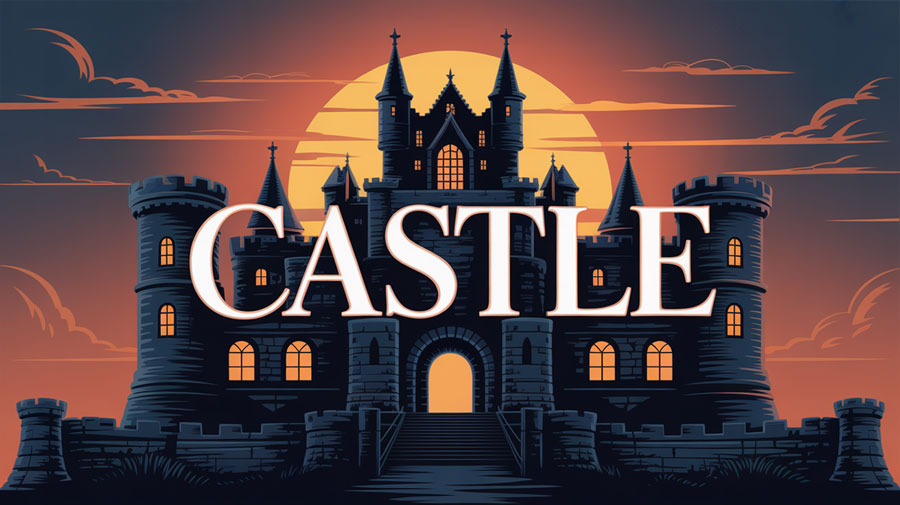Castles have always been symbols of power, history, and mystery. From medieval fortresses to grand royal residences, castles stand as remarkable structures that offer insight into the past. This article explores the history of castles, their architectural features, notable examples around the world, and the role they have played in shaping history.

1. The History of Castles:
The history of castles dates back to the early Middle Ages, when they were primarily built for defense. These structures were designed to withstand sieges and attacks, offering protection to nobility and their lands. Castles became more prominent during the 9th and 10th centuries, especially in Europe, and were essential in establishing dominance over territories.
During the feudal period, castles also became centers of administration and governance. Lords would live in these fortified structures, and the surrounding area would serve as farmland and villages. As time progressed, the function of castles shifted from military strongholds to luxurious residences for royalty and aristocracy. Some castles were even transformed into magnificent palaces with sprawling gardens and intricate interiors.
2. Architectural Features of Castles:
Defensive Walls: One of the most recognizable features of castles is their thick, fortified walls designed to withstand enemy attacks. These walls were often constructed from stone and sometimes reinforced with iron.
Moats: Many castles were surrounded by deep moats filled with water, serving as an additional layer of defense. The moat would make it difficult for attackers to approach the walls.
Towers and Turrets: Castles typically featured tall towers that provided a vantage point for watchmen to spot any approaching enemies. Turrets were often incorporated into the design to enhance both the aesthetic and defensive aspects.
Drawbridges: A common feature in castles, drawbridges could be raised or lowered to control access to the castle. This mechanism was essential in securing the entrance during times of threat.
3. Famous Castles Around the World:
Neuschwanstein Castle (Germany): Known for its fairy-tale appearance, Neuschwanstein Castle has become an iconic symbol of romantic architecture. It is perched atop a hill in Bavaria, Germany, and is a popular tourist destination.
Edinburgh Castle (Scotland): Dominating the skyline of Edinburgh, this historic fortress is a symbol of Scotland's rich history. The castle has played a key role in numerous historical events and continues to attract millions of visitors each year.
Château de Chambord (France): Located in the Loire Valley, the Château de Chambord is one of the largest and most recognizable castles in France. Its distinctive Renaissance architecture makes it a must-see for history enthusiasts.
Himeji Castle (Japan): Often referred to as the "White Heron Castle" due to its beautiful white exterior, Himeji Castle is a prime example of Japanese castle architecture and a UNESCO World Heritage site.
4. The Role of Castles in History:
Castles were not just military structures; they played a crucial role in shaping the political and cultural landscape of the regions they were built in. During times of war, castles were strategic bases for rulers and military leaders. They served as command centers where decisions were made, and resources were managed. In times of peace, castles became symbols of wealth, power, and influence, attracting skilled artisans, architects, and even scholars.
Castles also played a significant role in the local economy. The surrounding lands were often worked by peasants, who were required to pay rent or taxes in exchange for protection. These arrangements were integral to the feudal system, which was prevalent in Europe during the Middle Ages.

5. Frequently Asked Questions (FAQs):
Q: What is the oldest castle in the world?
A: The oldest known castle is the Burgh Castle in Norfolk, England. It was built by the Romans around the 3rd century AD.
Q: Are castles still used today?
A: While many castles are no longer used for their original military purposes, some still serve as residences, museums, and tourist attractions. Others have been converted into hotels or event venues.
Q: How were castles heated in the past?
A: Castles were heated using large open fireplaces and stoves. The heating system was rudimentary compared to modern systems, and many castle rooms were often cold and drafty during the winter months.
Q: What were the roles of people living in a castle?
A: Castles were home to nobility and their families, as well as soldiers, servants, and craftsmen. The lord or lady of the castle would oversee the administration of the estate, while other inhabitants played various roles in maintaining the castle and surrounding lands.
Conclusion:
Castles are not only architectural marvels but also cultural and historical landmarks. They offer a glimpse into the past, revealing the ways in which people lived, governed, and defended their territories. Today, castles continue to captivate us with their beauty, mystery, and fascinating stories. Whether you’re a history buff or simply love architecture, exploring castles is a rewarding experience that connects us to the past and inspires us for the future.